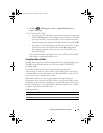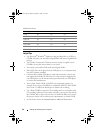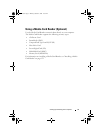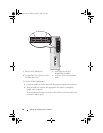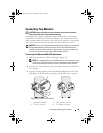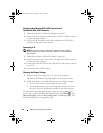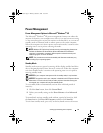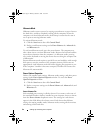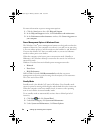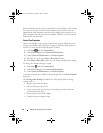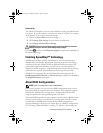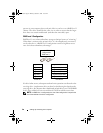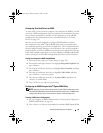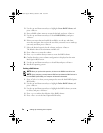
Setting Up and Using Your Computer 43
NOTICE: If you set the hard drive to time-out before the monitor does, your
computer may appear to be locked up. To recover, press any key on the keyboard or
click the mouse. To avoid this problem, always set the monitor to time-out before the
hard drive.
The Power schemes drop-down menu displays the following schemes:
•
Always On
(default) — If you want to use your computer with no power
conservation.
•
Home/Office Desk
— If you use your computer as a home or office
computer and you require minimal power conservation.
•
Minimal Power Management
— If you want your computer to run with
minimal power conservation.
•
Max Battery
— If your computer is a portable computer and you run your
computer from batteries for extended periods of time.
If you want to change the default settings for a scheme, click the drop-down
menu in the Turn off monitor, Turn off hard disks, System stand by, or
System hibernates field, and then select a time-out from the displayed list.
Changing the time-out for a scheme field permanently changes the default
settings for that scheme, unless you click Save As and enter a new name for
the changed scheme.
Advanced Tab
The Advanced tab allows you to:
• Place the power options icon in the Windows taskbar for quick access.
• Set the computer to prompt you for your Windows password before the
computer exits from standby mode or hibernate mode.
• Program the power button to activate standby mode, activate hibernate
mode, or turn off the computer.
To program these functions, click an option from the corresponding
drop-down menu and click OK.
Hibernate Tab
The Hibernate tab allows you to enable hibernate mode. If you want to use
the hibernate settings as defined on the Power Schemes tab, click the
Enable hibernate support check box on the Hibernate tab.
book.book Page 43 Monday, October 6, 2008 11:38 AM



